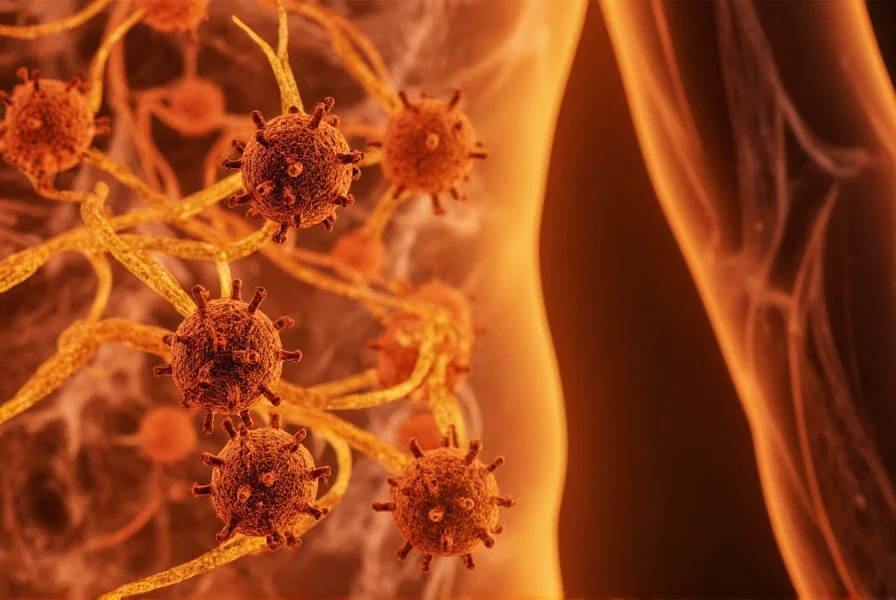Understanding the proper turmeric dosage for inflammation requires examining scientific evidence rather than anecdotal claims. Turmeric's primary active compound, curcumin, demonstrates potent anti-inflammatory properties, but its bioavailability presents challenges that affect dosing recommendations.
The Science Behind Turmeric and Inflammation
Curcumin, the yellow pigment in turmeric, inhibits multiple inflammatory pathways and molecules including NF-kB, cytokines, and enzymes like COX-2. According to a Journal of Medicinal Food review, curcumin's anti-inflammatory effects compare favorably to some pharmaceutical agents but without the same side effect profile. However, curcumin has poor bioavailability on its own, which significantly impacts effective dosing.

Evidence-Based Dosage Guidelines
Research provides specific guidance on turmeric dosage for inflammation management:
| Form of Turmeric | Recommended Daily Dose | Curcumin Content | Frequency |
|---|---|---|---|
| Standardized curcumin supplement | 500-1,000 mg | 95% curcuminoids | Twice daily |
| Curcumin with piperine | 400-500 mg | 95% curcuminoids + 5-10 mg piperine | Twice daily |
| Turmeric powder (culinary) | 3,000-8,000 mg | 2-8% curcumin | With meals |
| Liquid curcumin extract | 30-90 drops | Varies by product | Once or twice daily |
Maximizing Turmeric's Anti-Inflammatory Benefits
The most effective turmeric dosage for inflammation depends significantly on bioavailability enhancement. Pure curcumin has extremely poor absorption. Research published in Phytotherapy Research demonstrates that combining curcumin with piperine (from black pepper) increases absorption by up to 2,000%. Other strategies to improve bioavailability include:
- Consuming turmeric with healthy fats (curcumin is fat-soluble)
- Using formulations with phospholipids (like Meriva®)
- Taking turmeric with meals containing black pepper
- Choosing products with nanoemulsion technology
Safety Considerations and Maximum Dosage
While turmeric is generally safe, understanding the maximum safe dose of turmeric for inflammation is crucial. The European Food Safety Authority established an acceptable daily intake of 0.13 mg per pound (0.3 mg/kg) of body weight for curcumin. For most adults, this translates to approximately 2,000 mg of curcumin daily as the upper limit for regular use.
Exceeding recommended turmeric dosage for inflammation may cause:
- Gastrointestinal discomfort (nausea, diarrhea)
- Increased risk of bleeding (especially with blood thinners)
- Interference with iron absorption
- Potential gallbladder contractions
Duration of Use and Expected Results
When determining how much turmeric to take for inflammation, consider duration. Most clinical trials showing significant anti-inflammatory effects used turmeric supplementation for 8-12 weeks. A Journal of Clinical Psychopharmacology study found measurable reductions in inflammatory markers after 4 weeks of 1,000 mg daily curcumin supplementation.
For chronic inflammatory conditions like arthritis, many healthcare providers recommend:
- Initial loading phase: 1,000-1,500 mg curcumin daily for 4-6 weeks
- Maintenance phase: 500-1,000 mg daily thereafter
- Cycling approach: 8 weeks on, 2 weeks off to maintain effectiveness
Special Considerations for Specific Conditions
The optimal turmeric dosage for inflammation varies by condition:
- Osteoarthritis: 1,000 mg curcumin daily shows significant pain reduction in multiple studies
- Rheumatoid arthritis: Higher doses up to 1,500 mg daily may be needed due to more severe inflammation
- Post-exercise inflammation: 500 mg taken before and after exercise demonstrates benefits
- General wellness: 500 mg daily provides baseline anti-inflammatory support
When to Consult a Healthcare Provider
Before determining your personal turmeric dosage for inflammation, consult a healthcare provider if you:
- Take blood thinners (warfarin, aspirin, etc.)
- Have gallbladder issues
- Are scheduled for surgery within 2 weeks
- Take diabetes medications
- Are pregnant or breastfeeding
- Have iron deficiency
Healthcare providers can help determine the appropriate turmeric dosage for your specific inflammatory condition while considering potential interactions with your current medications and health status.










 浙公网安备
33010002000092号
浙公网安备
33010002000092号 浙B2-20120091-4
浙B2-20120091-4